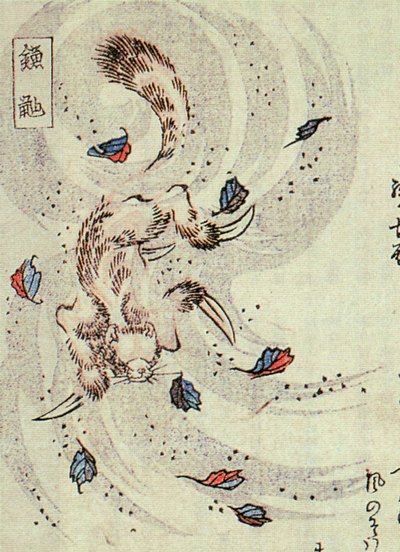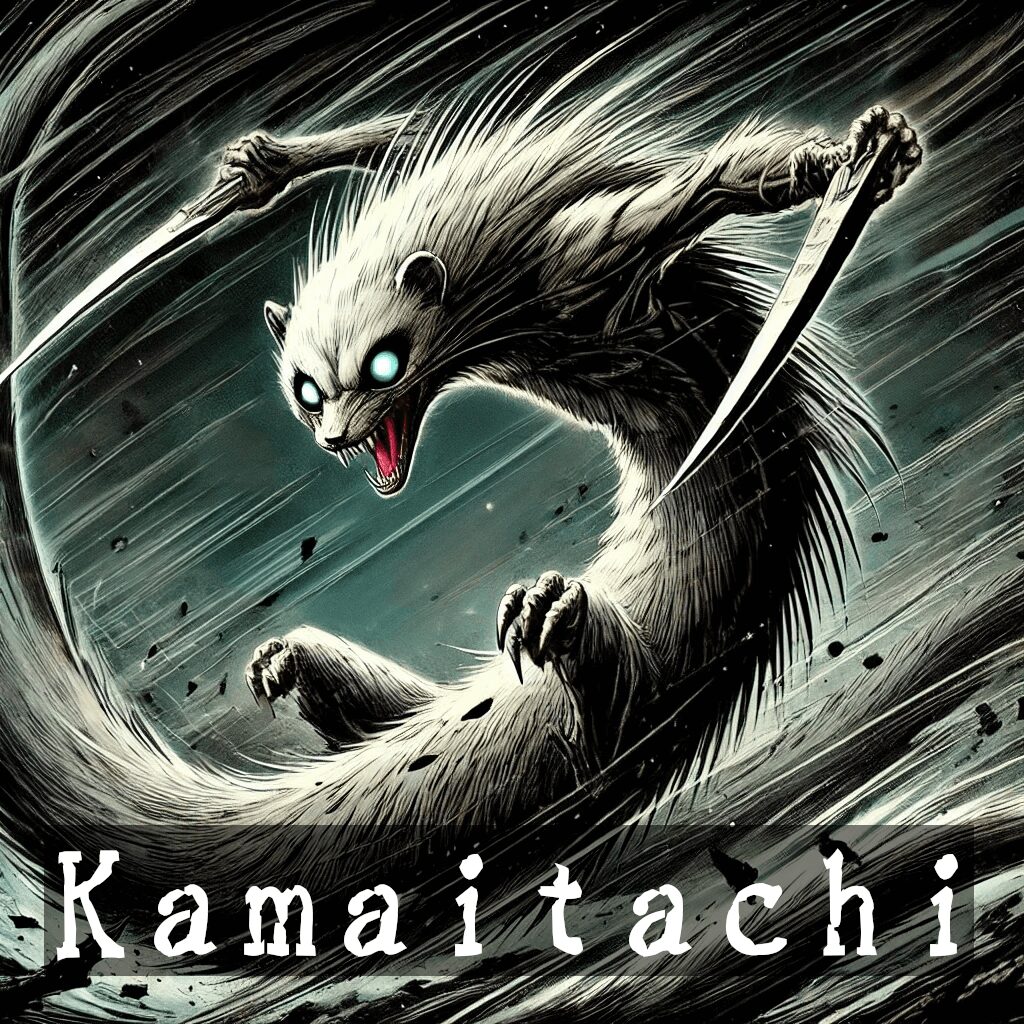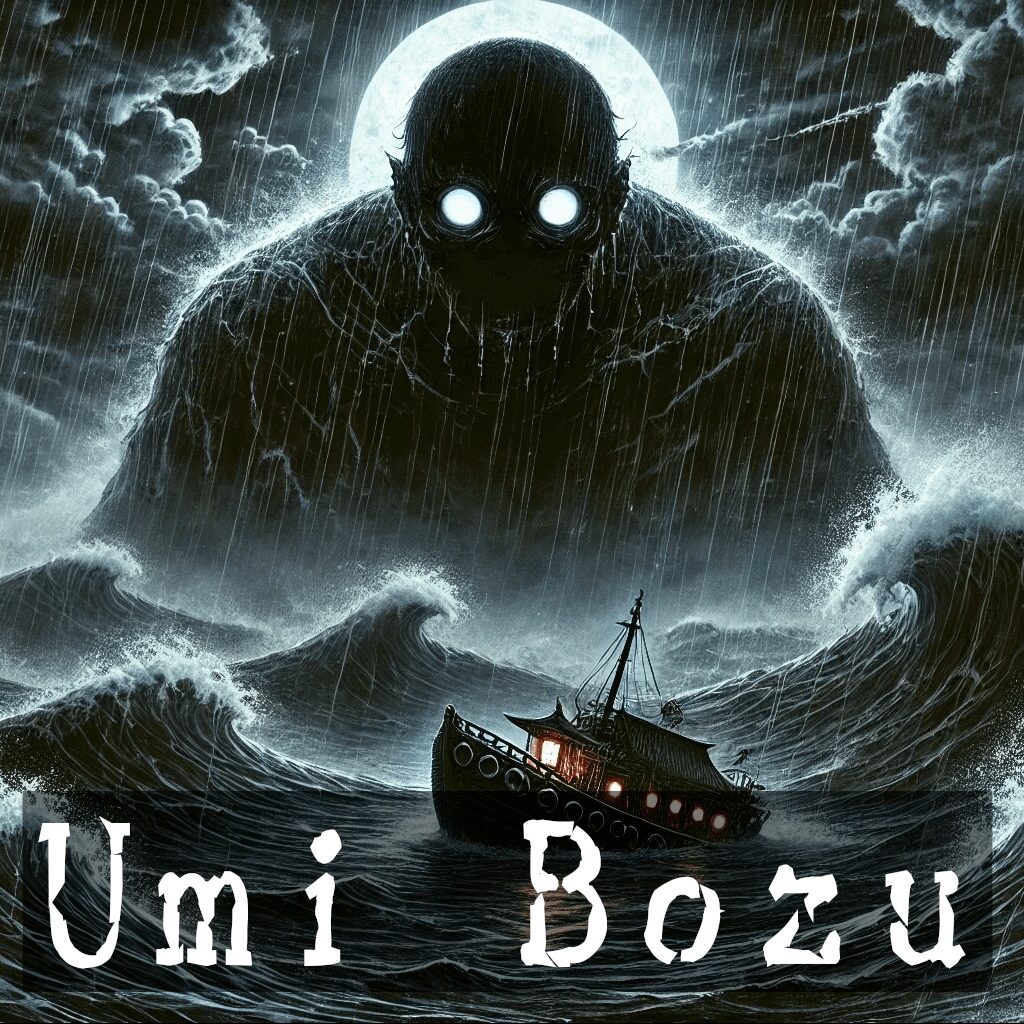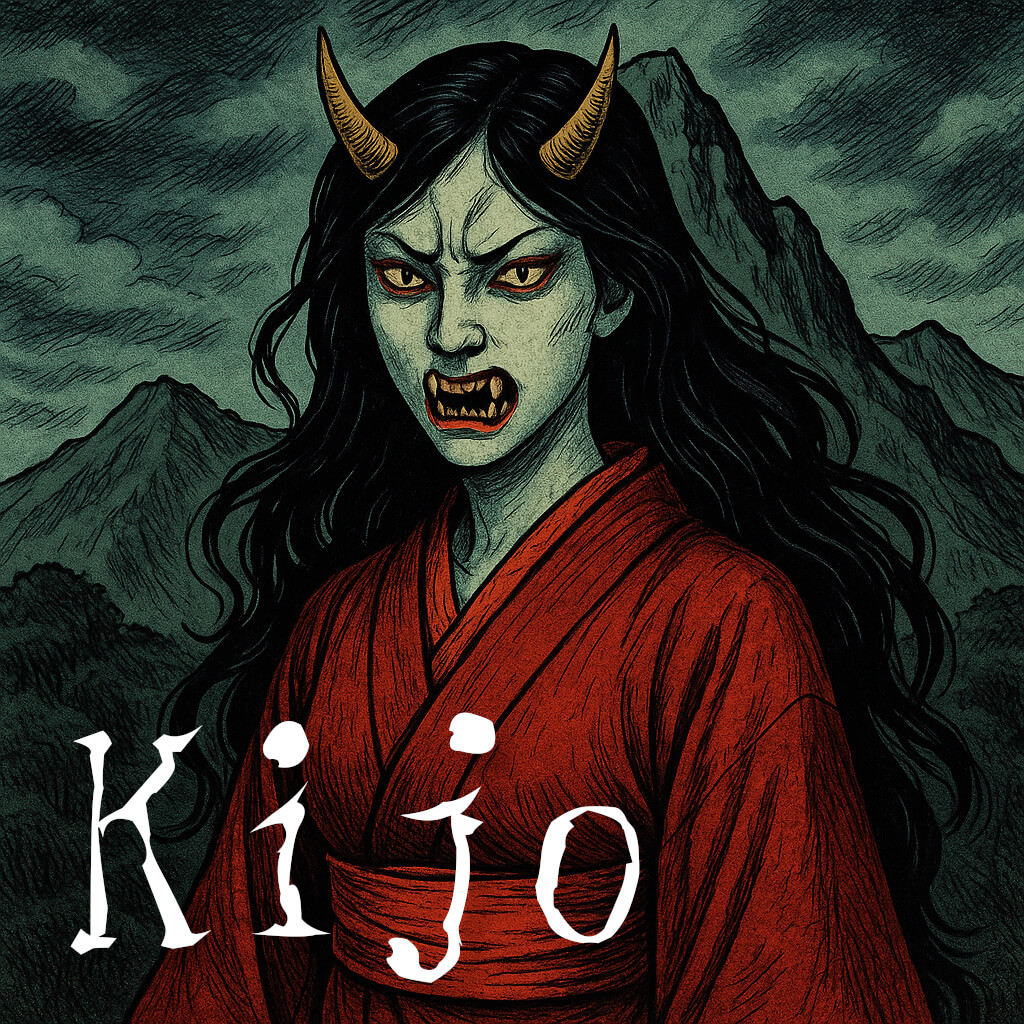Was it just an accident? Or could it be… the work of a Kamaitachi? Suddenly, a strong wind rushes past, knocking you off balance or having a sharp sensation that grazes your skin…
Here, we’ll delve into the eerie legends of this mysterious yokai, its various regional interpretations, its scientific explanations, and its influence on modern culture.
What is Kamaitachi?
Kamaitachi (鎌鼬 / かまいたち) is a mysterious yokai, a supernatural being from Japanese folklore, or the phenomena it is said to cause. It is often associated with sudden gusts of wind, particularly in mountainous or snowy regions.
The name contains two Kanji letters, Kama (鎌) meaning sickle, and Itachi (鼬) meaning weasel. As the name tells, it is depicted as a spectre in the form of a weasel with sickle-like claws.
One theory says that this phenomenon is caused by Fujin (風神 / Wind God). As Fujin has a sword, and the sound of “Kamae Tachi (構え太刀 / holding a sword)” transformed into the name of Kamaitachi at some point.
Kamaitachi Yokai Story (podcast)
<–coming soon!–>
Characteristics of Kamaitachi

Appearance and Traits
Kamaitachi is said to appear with sudden gusts of wind, slashing at people with its invisible claws. Some believe it resembles a weasel-like creature, though its true form remains elusive.
It moves so fast that the human eye cannot perceive it, and those struck by it feel no pain—only realising they’ve been wounded after seeing the cuts on their skin. It is even said to let out dog-like cries as it moves.
The Kamaitachi’s Three-Stage Attack
The most famous depiction of Kamaitachi describes it as a trio working together in a coordinated attack:
- The first one knocks its victim down.
- The second one slashes at them with its claws.
- The third one applies a mysterious ointment to stop the bleeding.
This explains why victims often don’t feel pain and why their wounds don’t bleed excessively—yet the marks remain.
Regional Variations of Kamaitachi
Kamaitachi legends vary across Japan, so let me share some of the famous ones here.
- Niigata Prefecture: The current Niigata Prefecture was formerly known as the Echigo (越後) region, and there were many reports of the Kamaitachi phenomenon. For this reason, it was also counted as one of the Seven Wonders of Echigo (越後七不思議). There is also a theory that if you step on a Koyomi (暦 / Japanese calendar), you will encounter Kamaitachi. There is also a legend that if you are hit by Kamaitachi, you can cure the wound by sticking a burnt-black Koyomi to it.
- Kanagawa Prefecture: Present-day Kanagawa Prefecture was once known as the Sagami (相模) region, and even there, the phenomenon of wounds on limbs along with wind was reported. It was called Kamakaze (鎌風 / Sickle Wind) instead.
Scientific Explanations of Kamaitachi

Is Kamaitachi truly a yokai, or could it be explained by natural science? From here, we will try to figure it out from a science approach.
Theory 1: Atmospheric Pressure That Causes Winds
In mountainous areas, sudden gusts of wind and whirlwinds occur due to rapid changes in atmospheric pressure. These winds can be strong enough to knock people off their feet, which may have led to stories of an invisible force striking them down.
Theory 2: Medical Explanations for Mysterious Wounds
During the winter, dry skin can develop tiny cracks that may deepen when exposed to wind and friction. Similarly, if someone falls, they could be scratched by sharp ice or grass.
You might have experienced those (at least I have), which will leave wounds that appear to have been inflicted by an unseen attacker.
Theory 3: The Role of Dust Devils and Air Currents
Another possible explanation is the phenomenon of dust devils and micro-whirlwinds. These small, powerful wind currents can form suddenly, lifting dust and debris, which could potentially scratch the skin in a seemingly inexplicable manner.
Kamaitachi in Japanese Modern Culture
in Literature and Folklore
Kamaitachi has long been a part of Japanese literature and folklore. In the Edo Period (around the 17th century), there was a Kaidan book called Kokon Hyakumonogatari Hyoban (古今百物語評判).
More recently, Lafcadio Hearn, in his famous book Kwaidan, wrote about wind spirits that fit the description of Kamaitachi.
in Anime & Manga
Kamaitachi’s influence can be seen in various anime, manga, and video games. Some notable examples include:
- Naruto: A female character, Temari (テマリ), uses wind-based attacks that might be inspired by Kamaitachi.
- Ge Ge Ge no Kitaro (ゲゲゲの鬼太郎): Some episodes of this Yokai anime and manga feature Kamaitachi.
- Pokemon (ポケモン): One of the attacks that appears in the video game series is called Kamaitachi, and it involves attacking with a blade of wind.
- Yokai Watch (妖怪ウォッチ): A yokai with a large sickle called Kamaitachi appears.
- Demon Slayer (鬼滅の刃 / Kimetsu No Yaiba): Shinazukawa Sanemi (不死川実弥), a member of the Demon Slayer Corps (鬼殺隊 / Kisatsutai), acts as Wind Hashira (風柱). In his technique, Wind Breathing (風の呼吸), he uses the Kamaitachi everlasting wind blade to attack his enemies.
Do Kamaitachi really exist…?
Is Kamaitachi simply a misunderstanding of natural phenomena, or could it be something more?
Even with modern science, we still encounter unexplained gusts of wind and sudden, mysterious wounds. So maybe, why not…
Find Your Kaidan!
Discover your favourite Japanese scary/horror stories
Categories
Let’s talk
Would you like to analyse the story, make theories on it, and share your thoughts?
Please join our Discord channel
where you can share your thoughts and interact with other Kaidan lovers!










